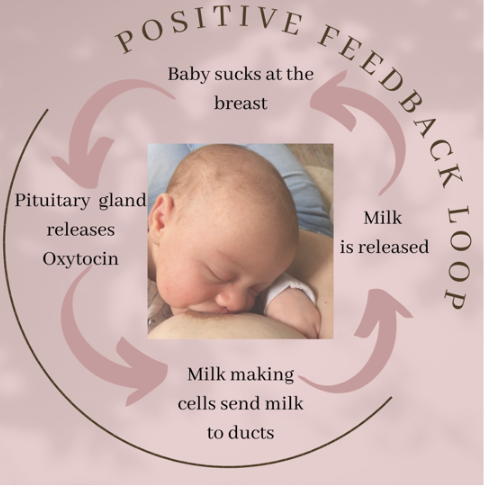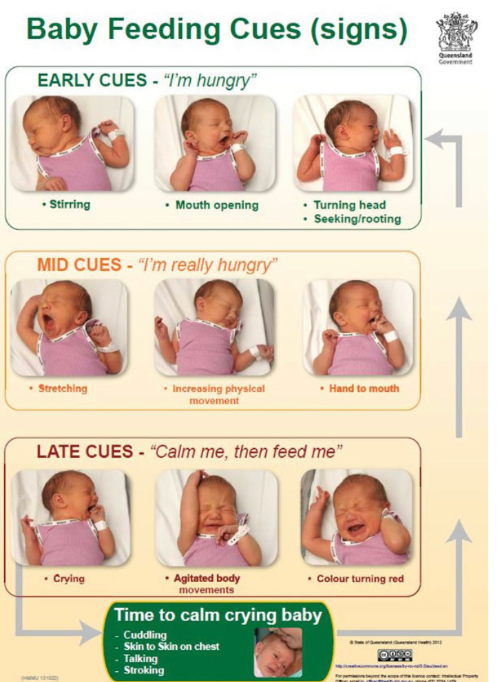Breast/Chestfeeding Basics
- annamurray574
- Oct 7, 2022
- 4 min read

A common cause of anxiety for new parents is breast/chest feeding; how do you do it? Why won’t they latch? Why is it hurting? Why won’t they wake up to feed? Why won’t they stop feeding? Am I starving them? Am I making enough milk?
The list goes on and on. It can be a really overwhelming and confusing time as you try to understand what's happening and if it's normal.
By the time you’ve read this blog, I’m hoping you’re not just going to understand what's normal, you’ll know when it's not, and where to seek support to get back on track. So let's dive in:
Normal Newborn feeding behaviour
Let's start from the very beginning(🎶a very good place to start 🎶 ).
You’ve just given birth, you and your baby are having skin to skin and they start wriggling about and headbutting you. You may notice they’re using their little legs to push themselves up your body - you're not imagining that - it's what's known as the Breast Crawl. Your baby has inbuilt reflexes to help it find the breast/chest as soon as possible after birth. Your baby might go to the breast/chest straight away, or they may be too sleepy, don’t worry if the breast crawl doesn’t happen, offering food regularly and giving them lots of time in skin to skin will encourage them to feed. There can be a number of reasons your baby may take longer to have their first feed but hand expressing and giving your baby small amounts of milk via a cup/syringe/spoon can be helpful in these instances.
Once your baby has decided they want to feed, you might find they want to feed A LOT. This can be for a number of reasons - their stomachs are small and breastmilk is very easily digested, they are learning a new skill and may not be completely effective at getting what they need just yet, they are making sure you don’t abandon them or they are regulating your supply. The list isn't exhaustive and it might be that they're feeding for more than one reason.

Milk supply is dictated by a positive feedback loop, and your baby knows it's their job to regulate your supply. You will notice big changes in the amount of milk you make over the first few weeks after birth, if your baby struggles with feeding or isn't able to empty a breast/chest effectively your milk supply will be impacted. Having support from feeding peer supporters, lactation consultants and other feeding specialists can help assess early niggles and get them sorted.
Your milk supply generally changes and increases between day 3 and 5 postpartum, and you may find your baby wants to feed frequently and is unsettled during the lead up to this, especially overnight. This in part is due to the positive feedback loop, it is also part of the process of adjusting to life outside the womb. It's really important to remember that your baby isn't broken and you aren't doing anything wrong. They just simply need to be with you. They’ve been inside you, physically attached by a cord for nine months. They haven’t had to work for their food, they have heard and smelt you constantly, they have had no need to regulate their breathing or temperature. The breast isn’t just a food source, it's what they use for comfort and reassurance, to keep you with them, to help them adjust to our world.
Ok, that’s all fair enough, but how do I know when my baby wants to go to the breast/chest if they are settled? How will they tell me if they are hungry?
Feeding cues, basic positioning and attachment
Feeding responsively (responding to baby's cues for feeding) is a good way to establish feeding. Your baby will need at least 8 feeds in 24hrs, but that doesn’t mean you need to watch the clock and put a feeding schedule in place. Feed your baby when they tell you they’re hungry. Feeding cues can look like this -

Feeding your baby responsively and being aware of their nappy output as well as having them weighed regularly will help you understand if they are getting enough milk. Your baby’s wet and dirty nappies will change in consistency and amount as your milk supply changes and increases.

One way to help your baby be as effective as possible at each feed is to make sure their position and attachment is optimal. A handy acronym to remember is CHINS -
Making sure your baby is close to you, with their tummy touching you. Their head is tilted back as they feed, with their chin indenting the breast/chest. Their ear, shoulder and hip should be inline. Place your nipple above their top lip or on their nose so they can open their mouths wide (Their head will tilt back at this point). Once they are latched, your position should be sustainable - you need to be comfortable, you might be there a while!
Right, that's the basics covered, but what do I do if things aren’t “normal”?
Seeking Support
Sometimes feeding doesn’t go to plan, there may be obstacles in the way, it may just feel harder than you expected it to, you might just not enjoy it. Seeking support early is key, whether it’s calling a breastfeeding helpline, accessing a facebook page or visiting a lactation consultant. You might also find your local NHS trust or children’s centre has a feeding support team or runs peer support groups.
Here’s a list of some organisations and private practitioners that may be able to help:
Your local children’s centre
A local Postnatal Doula
A paediatric chiropractor or Osteopath
A local La Leche league facebook page
Breast/chest feeding isn’t the easy route, it can be really hard. But with the right support it’s almost always worth it.






Comments